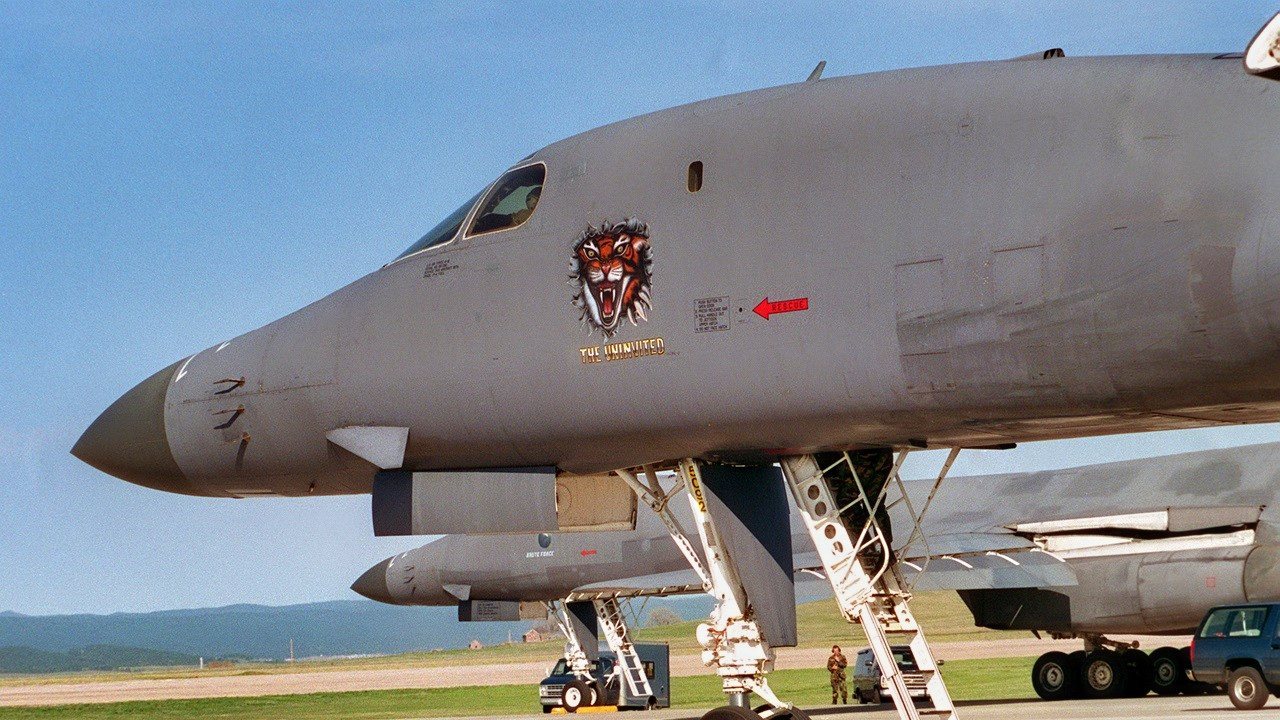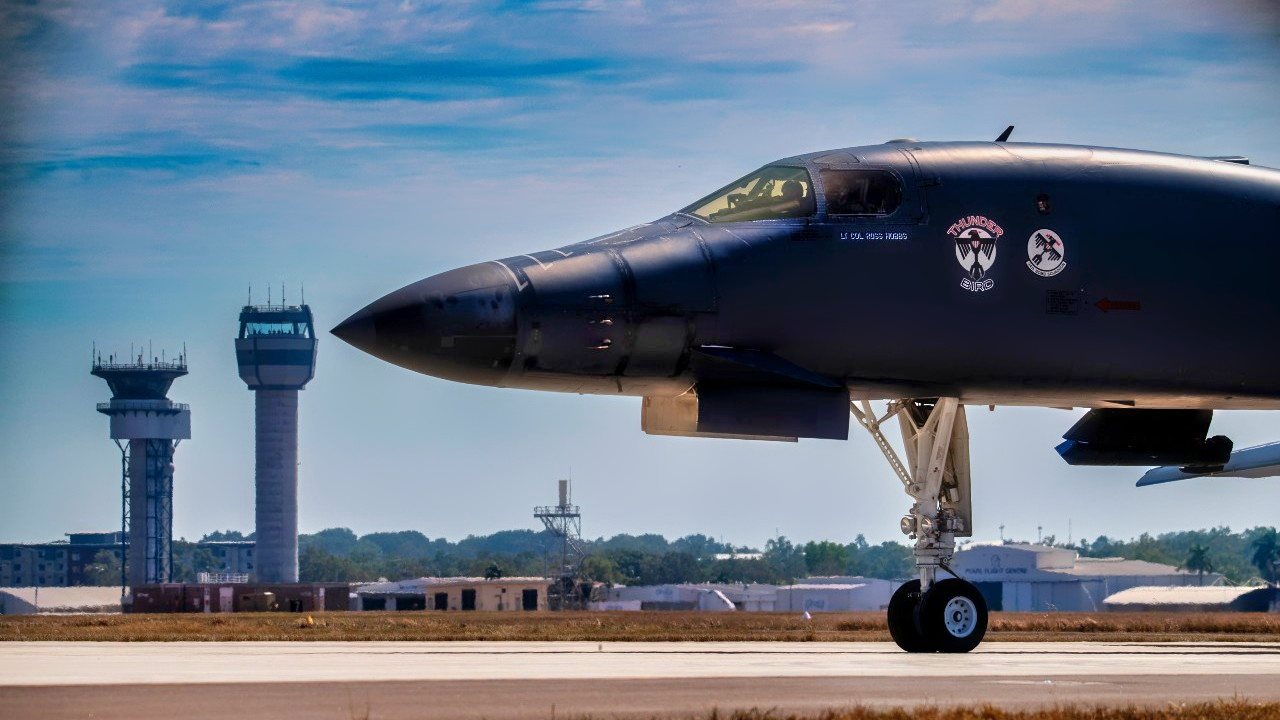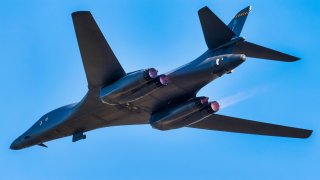The Air Force's B-1 Lancer Bomber Has a New Mission
A Cold War-era B-1 Lancer bomber fuselage was "going back to school," specifically to the National Institute for Aviation Research. It will be used for stress testing and future repair prototyping.
B-1 Lancer Bomber Heading to Wichita State University - It was likely a "once-in-a-lifetime" sight for many. A B-1 Lancer long-range strategic bomber was on the move from Fort Worth, Texas, to Wichita, Kansas – except it wasn't in the air. Rather the aircraft was being transported by tractor trailer, with wings removed, and avoiding major highways as it headed to Wichita State University.
The Cold War-era bomber's fuselage was "going back to school," specifically to the National Institute for Aviation Research. It will be used for stress testing and future repair prototyping.
Damaged B-1 Lancer – New Purpose
The B-1 Lancer in question – tail number 85-0089 – had been seriously damaged in April 2022 when it caught fire during routine engine maintenance while parked on the flight line at Dyess Air Force Base (AFB), Texas. The aircraft suffered catastrophic damage to its No. 1 engine, as well as extensive fire damage to the left nacelle and wing. The estimated cost from the fire was nearly $15 million.
After the aircraft was deemed no longer flight worthy, it was decided to send the damaged fuselage to the research institute, where it will aid in keeping the United States Air Force's fleet of B-1 Lancers flying until the B-21 Raider enters service later this decade.
The damaged aircraft was replaced by another B-1 Lancer that was maintained at the Aerospace Maintenance and Regeneration Group – aka "The Boneyard" – at Davis-Monthan AFB, Arizona.
A total of 104 B-1s were produced, but fewer than 60 remain in service today. It was also earlier in January that one of the remaining aircraft crashed while attempting to land at Ellsworth AFB, South Dakota. Four crew members were on board but were able to eject safely, the 28th Bomb Wing at Ellsworth said in a statement.
Creating The Digital Twin
Wichita State began a partnership with the Air Force in 2022 to create a "digital twin" of the B-1, which should help predict structural issues and serve as a baseline for any future upgrades to the bomber. A highly detailed computer model could make it easier to identify potential points of failure to help keep the remaining bombers flying.

Components from the aircraft that weren't damaged in the fire have remained behind where they will also be put to good use.
"Select portions of the aircraft will remain at Dyess AFB and will be used to train Airmen in various career fields," the Air Force announced.

It has already been quite the "road trip" for the bomber, as it was spotted in several cities including Silverton, Tulia, Happy, Canyon, Borger, Spearman and Perryton. Images have been widely shared on social media.
According to CBS Austin, the Hitchin Rail in Borger allowed the crew use its parking lot last Thursday night, and announced, "Who else has a B1 bomber at their bar. Y'all come check the size of this thing out!!!"

Author Experience and Expertise: Peter Suciu
Peter Suciu is a Michigan-based writer. He has contributed to more than four dozen magazines, newspapers, and websites with over 3,200 published pieces over a twenty-year career in journalism. He regularly writes about military hardware, firearms history, cybersecurity, politics, and international affairs. Peter is also a Contributing Writer for Forbes and Clearance Jobs. You can follow him on Twitter: @PeterSuciu. You can email the author: [email protected].


